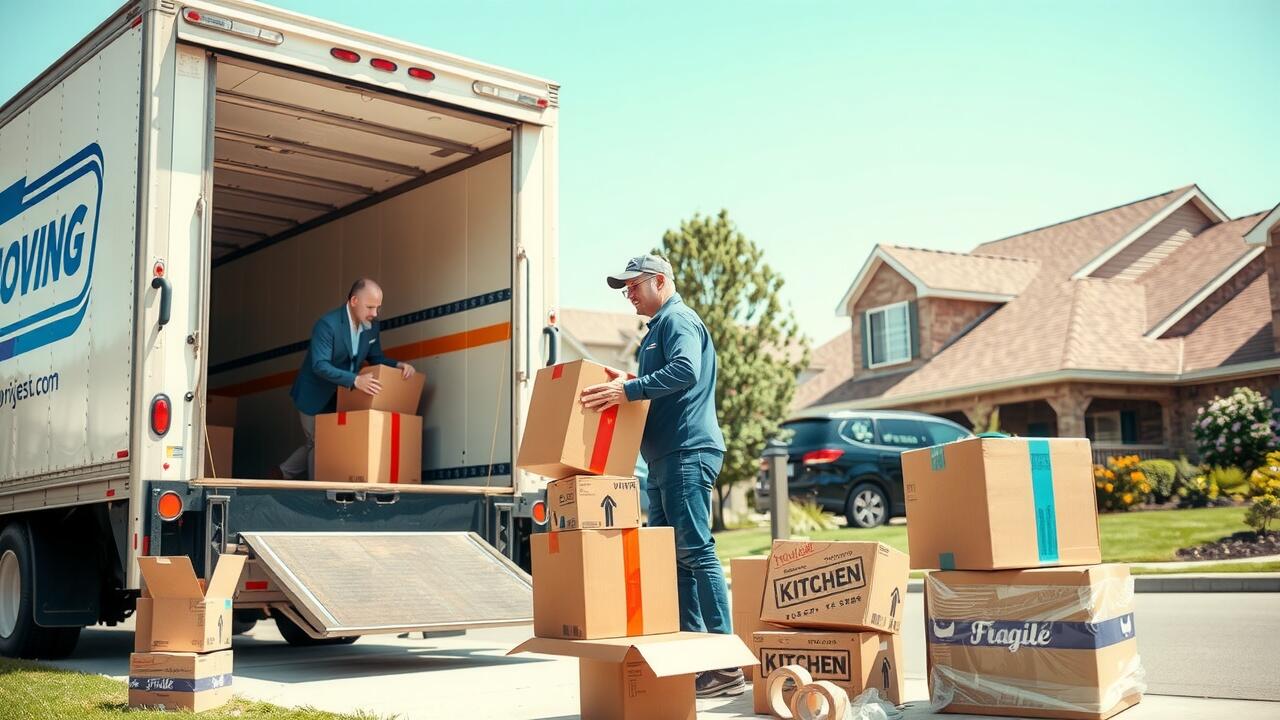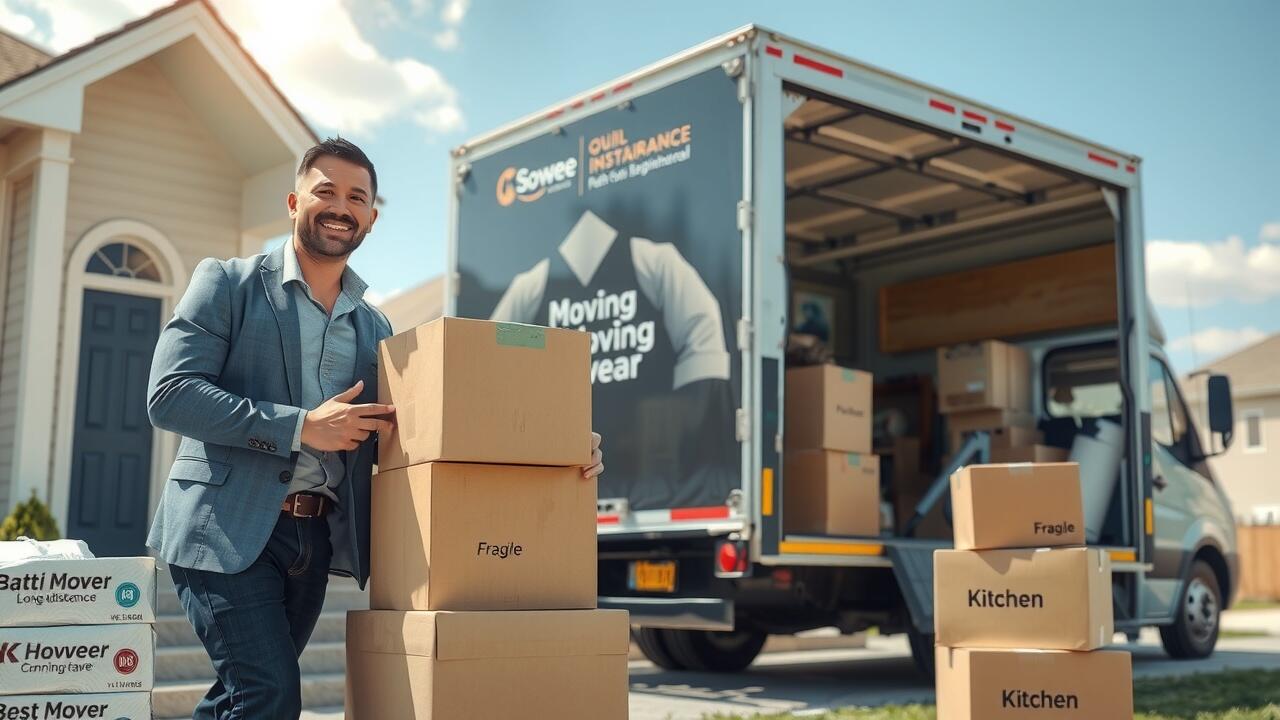
Table Of Contents
Cost of Packing Supplies
Packing supplies play a crucial role in ensuring a successful move. Items such as boxes, bubble wrap, tape, and padding materials are necessary to protect belongings during transport. For those considering long distance moving in Kansas, United States, the costs of these supplies can add up quickly. It's essential to factor in these expenses when estimating the overall budget for your move.
Purchasing packing supplies from retail stores or online can offer various price options. Many moving companies also provide packages of supplies at a discounted rate. Renting or borrowing boxes may further reduce costs. Understanding the specific materials needed for your belongings will help in making informed choices while keeping expenses within a reasonable range.
Essential Materials for a Safe Move
When preparing for a move, selecting the right packing materials is crucial for ensuring that your belongings reach their destination safely. Essential items include sturdy boxes, bubble wrap, packing tape, and markers for labeling. It is important to invest in high-quality supplies to prevent damage during transit. For those engaging in Long Distance Moving in Kansas, United States, acquiring materials designed for heavier items can provide additional protection.
Additionally, utilizing specialized containers such as wardrobe boxes can make packing clothing more convenient and organized. Blankets and towels can serve as padding for fragile items, minimizing the risk of breakage. Ensuring that all materials are suited to the specific needs of your belongings will help streamline the moving process and reduce stress during the transition.
Insurance Options for Moving
When planning a move, understanding insurance options is crucial for protecting your belongings. Different types of moving insurance can provide varying levels of coverage, from basic liability offered by moving companies to full-value protection. Basic liability typically covers only a portion of the item's value, which may not be sufficient for valuable possessions. Long Distance Moving in Kansas, United States, often involves higher risks due to the extended travel distance, making adequate insurance even more important.
Evaluating the right insurance option requires considering the value of your items and your potential financial loss in case of damage. Movers usually offer additional coverage for an added fee, which can be worth the investment for high-value items. It's essential to read the terms of the policy carefully to understand what is covered and any exclusions that may apply. This awareness will help ensure you have the right protection in place during your long-distance relocation.
Understanding Coverage and Costs
When planning a move, understanding insurance options is crucial, especially with long distance moving in Kansas, United States. Various coverage options are available, ranging from basic liability protection to full-value protection. Basic liability coverage typically compensates only for a portion of the item's value if it is damaged or lost. On the other hand, full-value protection offers more comprehensive coverage, ensuring that the moving company either repairs or replaces damaged items at their current market value.
Evaluating the costs associated with these insurance options is essential for making an informed decision. While full-value protection provides greater peace of mind, it often comes with higher premiums. Budget-conscious movers may prefer basic liability coverage due to its lower cost, despite the increased risk. Carefully assessing the value of personal belongings and considering the likelihood of potential damages can guide individuals in selecting the most suitable insurance option for their long distance move.
Seasonal Impact on Moving Costs
The cost of moving across the United States can vary significantly depending on the season. Many people choose to relocate during the summer months when the weather is more favorable. This peak season can lead to higher prices for moving services, as demand for trucks and labor increases. In contrast, winter months may offer reduced rates, but potential challenges such as snow or ice could complicate the process. Those considering Long Distance Moving in Kansas, United States, might find that planning their move during the off-peak season can result in considerable savings.
In addition to seasonal trends, holidays can also impact moving costs. Many families prefer to avoid moving during major holidays, which can inflate prices even further during those brief windows. Conversely, moving mid-week or in the late fall can lead to more competitive pricing and greater availability of services. Understanding these seasonal fluctuations is essential for budget-conscious movers looking to find the best deals available.
Best Times of Year to Move
The best times of year to move often depend on several factors, including weather, demand, and pricing. Generally, spring and fall are considered ideal for moves due to milder temperatures and lower demand compared to the summer months. Planning a move during these seasons can be cost-effective, as many moving companies offer discounted rates. Those looking for options for long-distance moving in Kansas, United States, should consider scheduling their moves in spring or fall to maximize savings and comfort.
Summer tends to be the busiest season for moving, resulting in higher costs and less availability. Families often choose to relocate during summer vacation, making it challenging to book ideal moving dates. For those considering long-distance moving in Kansas, United States, being flexible with timing could lead to better pricing and availability. Late winter can also be a less popular choice, offering potential cost benefits for those willing to brave the cold.
FAQS
What is the average cost to move across the United States?
The average cost to move across the United States typically ranges from $2,000 to $5,000, depending on factors such as the distance, the amount of belongings, and the specific services required.
How do packing supplies affect moving costs?
Packing supplies can add significantly to your moving costs, with essential materials such as boxes, tape, and bubble wrap averaging between $100 to $500 depending on the volume of items being moved.
What types of insurance options are available for moving?
Common insurance options for moving include basic liability coverage, full-value protection, and additional liability insurance, each offering different levels of coverage and costs.
Does the time of year impact moving costs?
Yes, moving costs can vary significantly by season. Peak moving season typically runs from May to September, often leading to higher prices, while moving during the off-peak months can save you money.
How can I save money on my cross-country move?
To save money on your cross-country move, consider decluttering your belongings, comparing quotes from multiple moving companies, and scheduling your move during the off-peak season.
